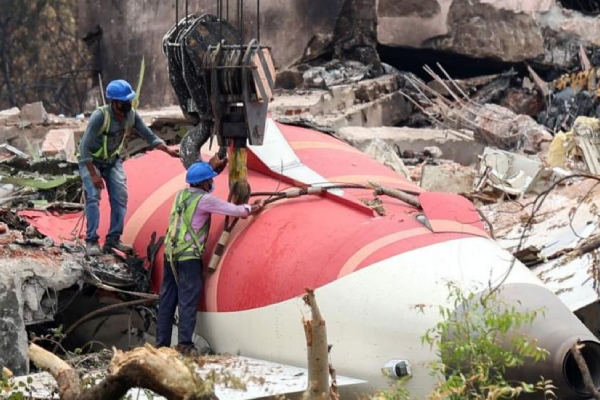The preliminary report into a fatal Air India plane crash has been released and it says fuel to the jet engines was shut off shortly after takeoff.
The report points to a series of possibilities and also raises multiple questions.
On June 12, Air India Flight 171, a Boeing 787-8 Dreamliner, departed Ahmedabad’s Sardar Vallabhbhai Patel International Airport at 1:39 pm, bound for London Gatwick.
Within 32 seconds of takeoff, the aircraft crashed into a medical hostel near the airport, killing 241 of the 242 passengers and crew on board and 19 people on the ground.
The sole survivor was a British-Indian man seated in row 11A.
A probe report by the Aircraft Accident Investigation Bureau (AAIB) was Friday night.
Read also https://www.tvcnews.tv/investigators-recover-cockpit-voice-recorder-from-air-india-crash/
According to data extracted from the aircraft’s Enhanced Airborne Flight Recorder (EAFR), commonly referred to as the black box, Flight 171 carried out a routine takeoff.
The Dreamliner accelerated to a takeoff speed of 153 knots or roughly 283 kmph. It then reached a maximum airspeed of 180 knots or roughly 333 kmph, climbing steadily as expected.
Read Also
The flap setting was recorded at five degrees, and the landing gear lever remained in the ‘DOWN’ position, both standard takeoff procedures.
Weather conditions posed no threat, skies were clear, visibility was good, and winds were light. Yet, within seconds, the fuel control switches for Engine 1 and Engine 2 moved from the “RUN” to “CUTOFF” position, one after the other, within a one-second interval.
These switches govern the flow of fuel to the engines, and their transition to “CUTOFF” halted the supply, causing both engines to lose thrust.
The black box data shows that thrust levels began to decrease from their takeoff values almost immediately, triggering a rapid de-throttling process.
As thrust diminished, the aircraft’s altitude began to drop.
The black box indicates that the pilots acted swiftly, moving both fuel control switches back to the “RUN” position. This action, executed approximately 10 seconds after the initial cutoff, aimed to restore fuel flow and restart the engines.
The AAIB’s preliminary report, spanning dozens of pages, drew on data extracted from the heavily damaged black box units, one located in the forward section, the other in the rear.
The AAIB has ruled out other variables. No significant bird activity was detected, negating a bird strike theory.
The Auxiliary Power Unit (APU), a rear-mounted mini jet engine, was operational and attempted an AutoStart to assist engine relight, but its role was secondary to the switches’ position.
Crucially, the report states there is “no immediate evidence of sabotage.”





